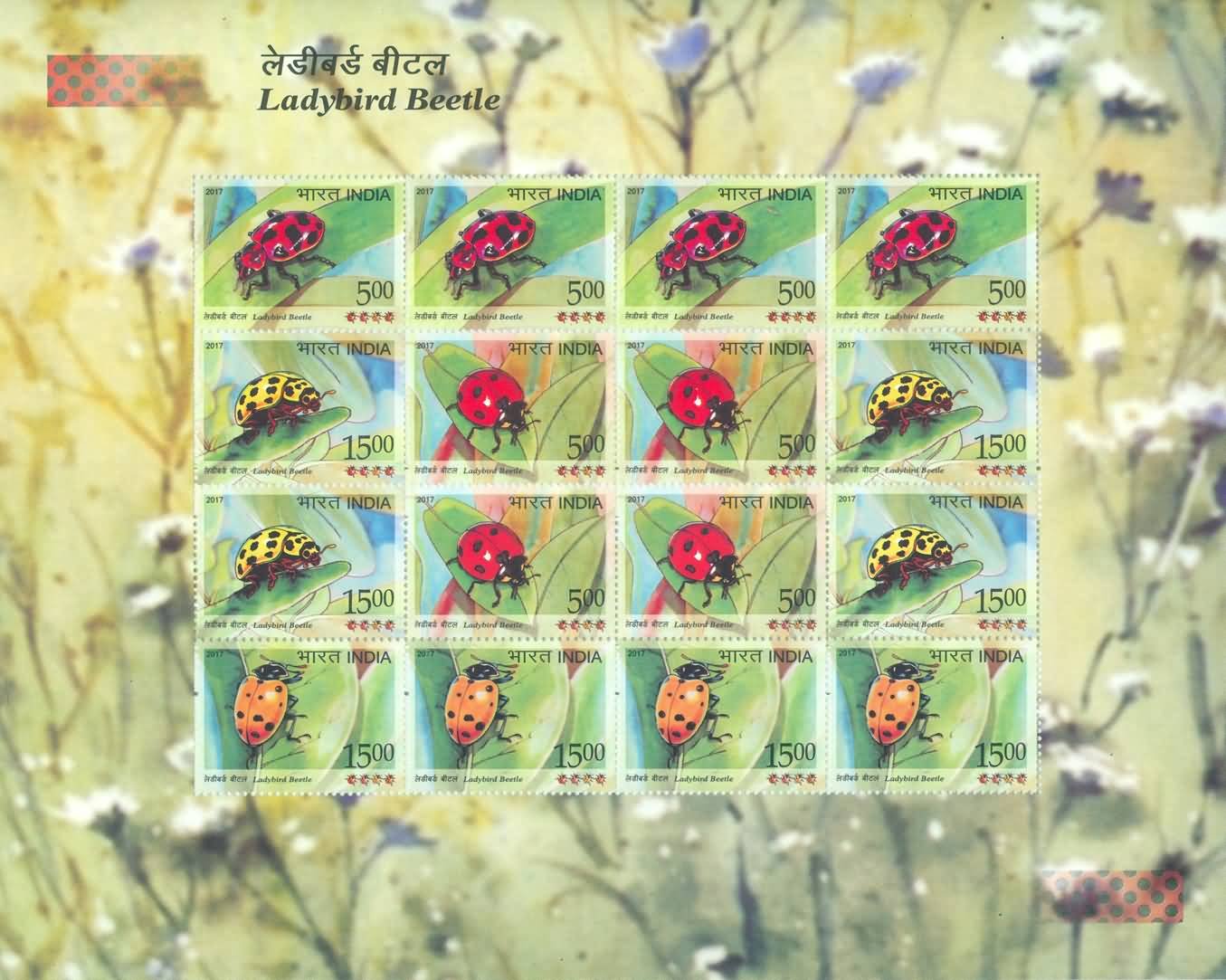Ladybird Beetle of India

Technical Data
| Date of Issue | February 23, 2017 |
|---|---|
| Denomination | Rs. 160 |
| Quantity | 200,000 |
| Perforation | 13½ x 13¾ |
| Printer | Security Printing Press, Hyderabad |
| Printing Process | Wet Offset |
| Watermark | No Watermark |
| Colors | Multicolor |
| Credit (Designed By) | Mr. Suresh Kumar |
| Catalog Codes |
Michel IN 3120-3123KB II |
| Themes | Animals (Fauna) | Beetles | Insects |
The Fascinating World of Beetles and the Charming Ladybird (Coccinellidae)
Beetles, belonging to the order Coleoptera, are among the most diverse and fascinating creatures on Earth. The term Coleoptera is derived from Greek—koleos meaning “sheath” and pteron meaning “wing”—referring to their distinctive sheathed wings. These insects have two pairs of wings: the front pair, which is hardened into a protective shell called elytra, and the rear pair, which is delicate and used for flight. The hardened forewings not only guard the flight wings but also shield the beetle’s abdomen, making them one of nature’s most resilient insects.
In fact, the beetle order is the largest in the animal kingdom, accounting for nearly 25% of all known animal species—a true testament to their adaptability and evolutionary success.
Coccinellidae: The Beloved Ladybird Beetle
Among the most adored beetles is the Coccinellidae family, popularly known as ladybirds, ladybugs, or lady beetles. Their name traces back to Latin—coccineus, meaning “scarlet”—and in Britain, they were affectionately called “Our Lady’s birds”, a reference to the Virgin Mary.
Ladybirds are instantly recognizable for their bright red, orange, or yellow wing covers adorned with black spots. Their heads, antennae, and legs are typically black, though color patterns can vary across species. This vivid coloration acts as a warning to predators, signaling their bitter taste and toxicity—a natural defense mechanism known as aposematism.
Entomologists prefer calling them ladybird beetles or lady beetles, since they are true beetles, not bugs.
Appearance and Characteristics
Ladybird beetles are small and hemispherical, rarely exceeding 6 mm (¼ inch) in length. Most have a rounded, dome-shaped body with six short legs and smooth wing covers. Depending on the species, they may feature spots, stripes, or no markings at all.
The famous seven-spotted ladybird, one of the most common species, is bright red or orange with three spots on each wing and one central spot, and a black head with white patches.
Their color and pattern are determined by genetics and species type. While the color begins to form soon after emerging from the pupa, it can take a few days to darken and stabilize as the beetle matures.
Life Cycle and Metamorphosis
Beetles, including ladybirds, are endopterygotes, meaning they undergo complete metamorphosis—a life cycle that includes four stages: egg, larva, pupa, and adult. This remarkable transformation reshapes their body entirely as they transition from crawling larvae to winged adults.
Ladybird larvae are typically elongated with three pairs of legs, and unlike caterpillars, they lack hind claspers. Their metamorphosis takes about four weeks from egg to adult, showcasing one of nature’s most efficient growth cycles.
The Farmer’s Best Friend: Ladybirds as Natural Pest Controllers
Beyond their beauty, ladybirds play a vital ecological role. Both larvae and adults are voracious predators of aphids, scale insects, and other crop pests—making them invaluable allies to farmers and gardeners.
A single ladybird can consume hundreds of aphids in its lifetime. Females lay up to 1,000 eggs per summer, often near aphid colonies to ensure immediate food for their young.
As winter approaches, these beetles congregate in large numbers to hibernate, a time when they are often collected and released by farmers for biological pest control. Their appetite for destructive pests helps reduce the need for chemical pesticides, promoting a healthier, more sustainable ecosystem.
Nature’s Tiny Guardians
From their dazzling colors to their beneficial habits, ladybird beetles are a true wonder of the natural world. Representing both beauty and balance, they remind us of the intricate connections between life forms and the importance of protecting biodiversity.
The Department of Posts, in celebrating the wonders of nature through philately, has beautifully captured such species on stamps—tiny tributes to nature’s artistry and the humble insects that help sustain our planet.
First Day Cover

